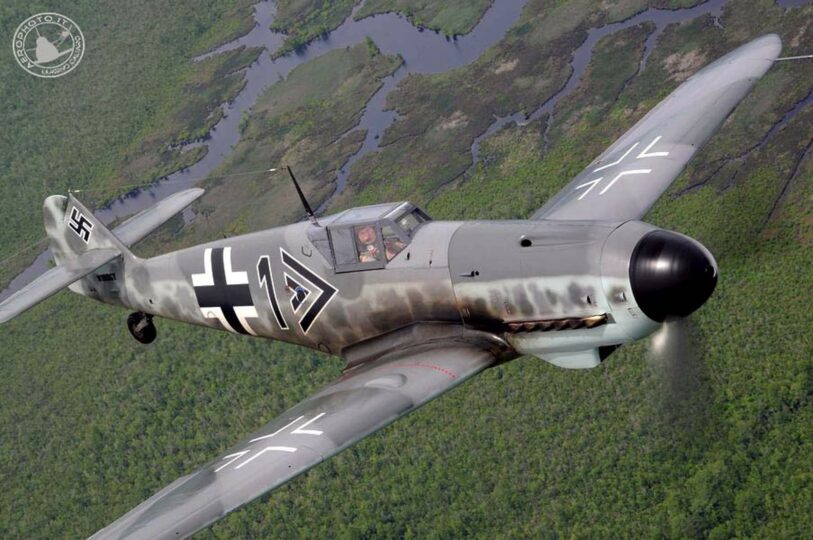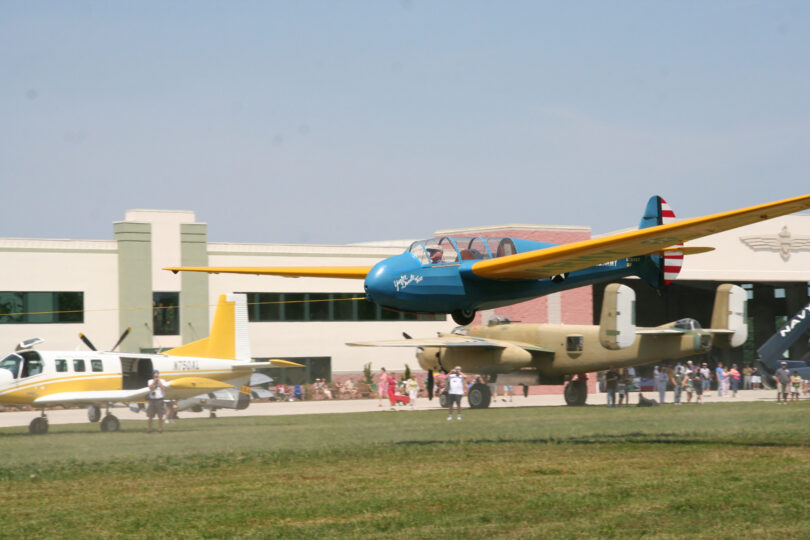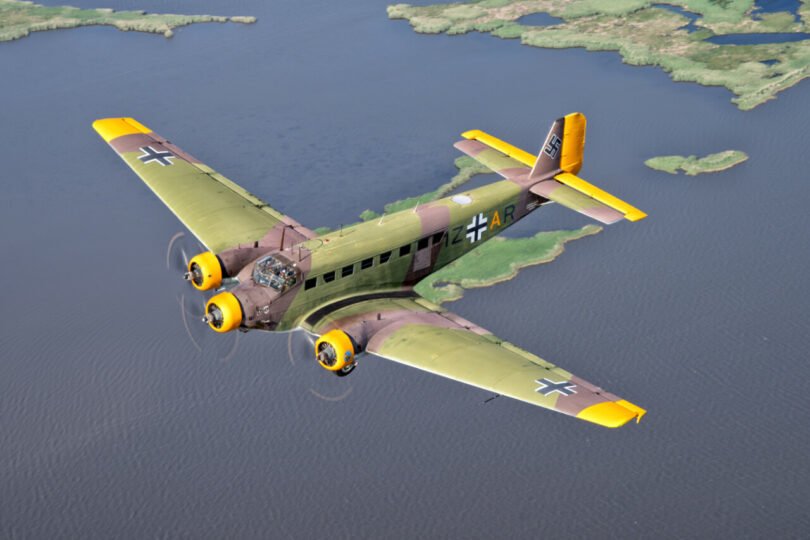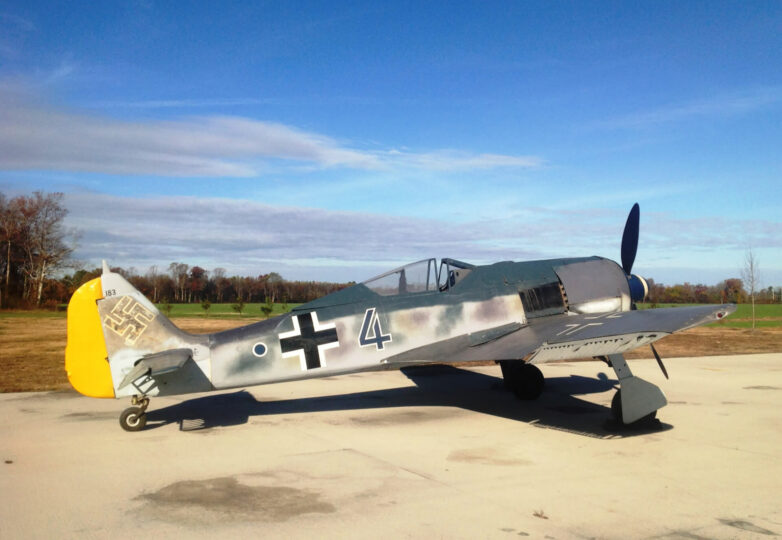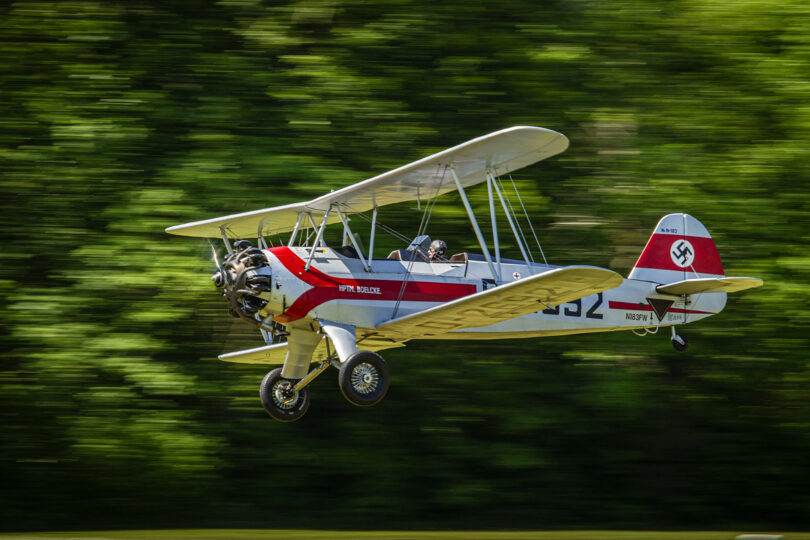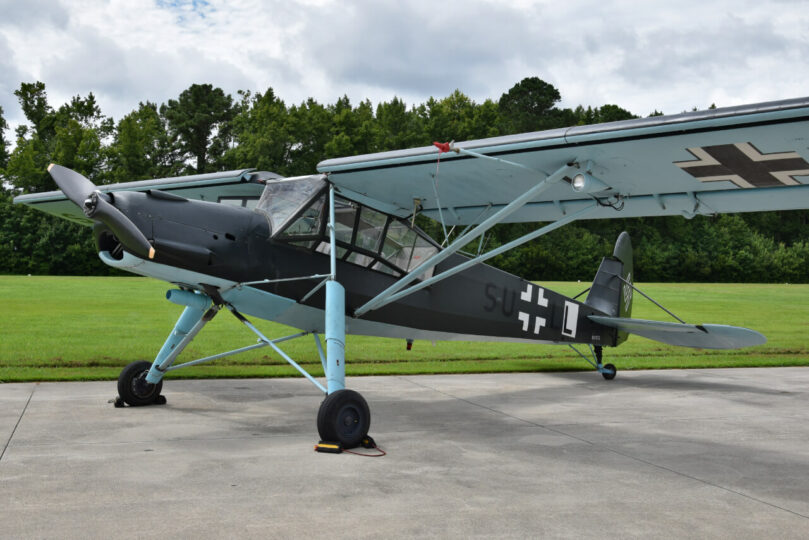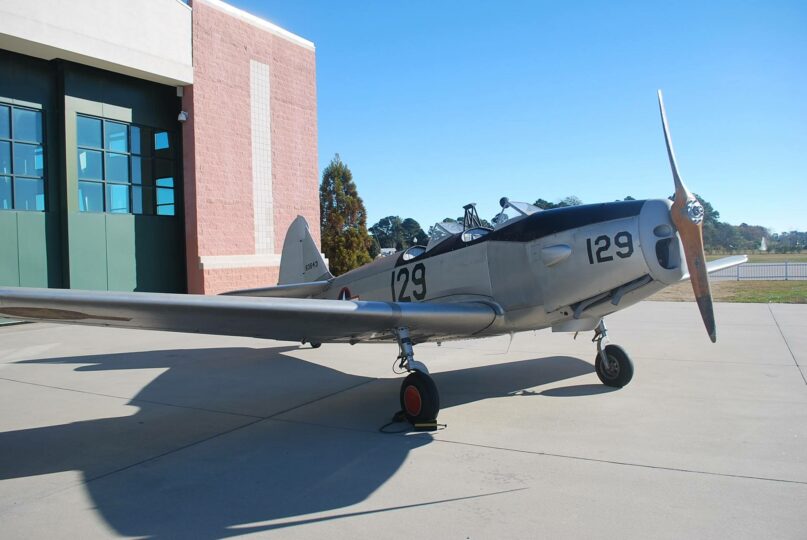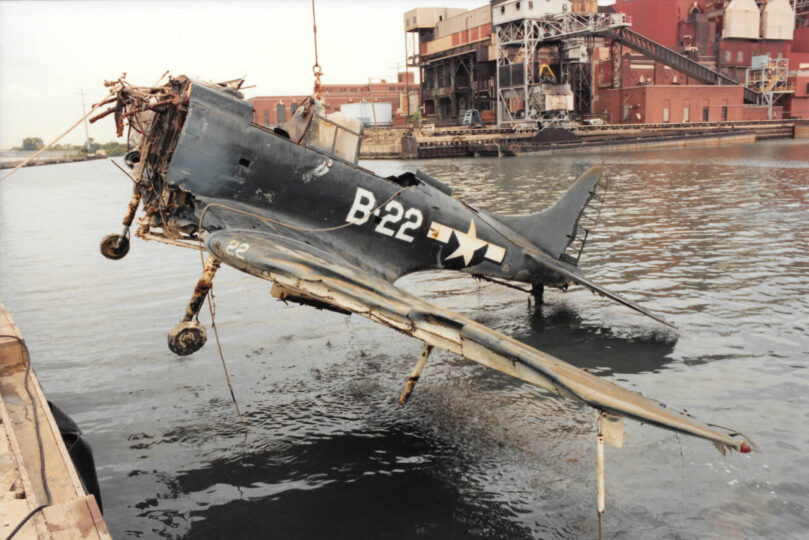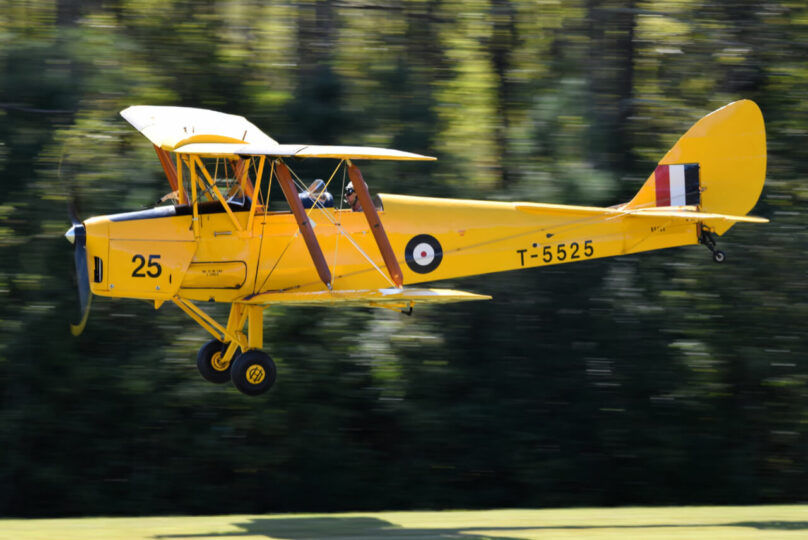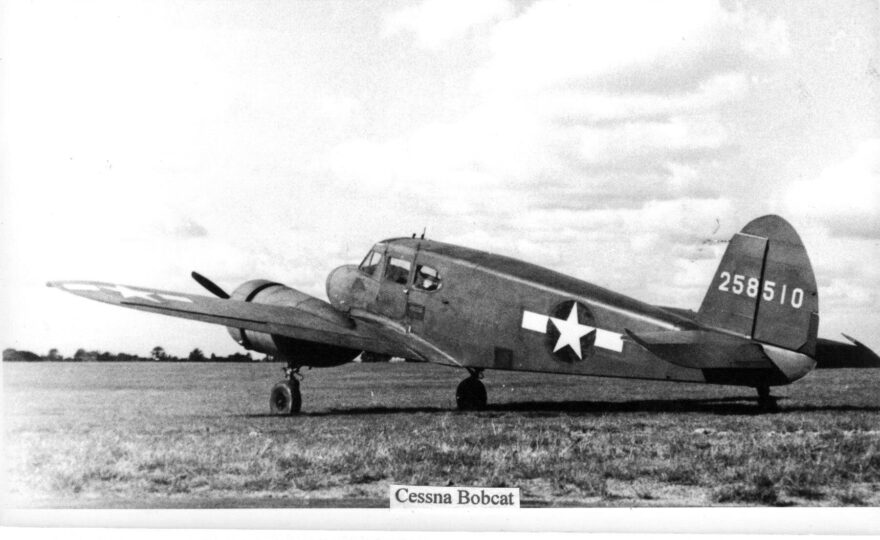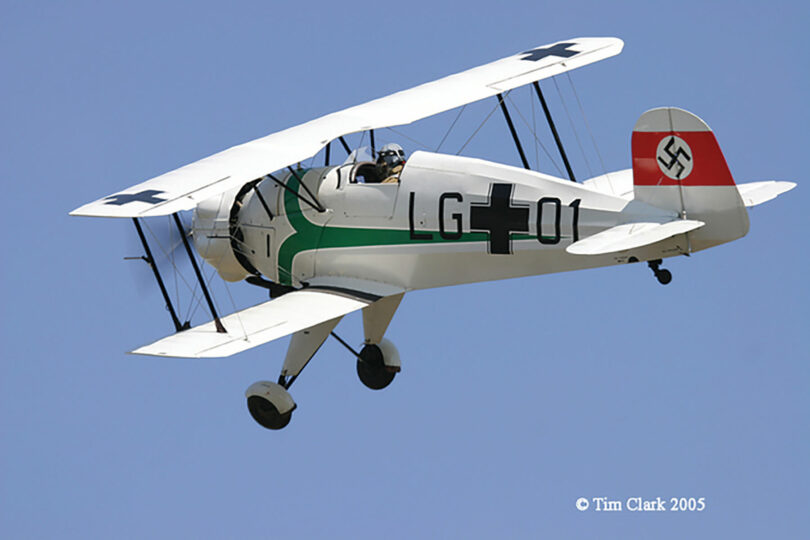Perhaps the most well-known German fighter of the war, the Messerschmitt Bf 109 would be the primary adversary faced by American pilots in the skies over Europe.
Gliders were used widely during the war to transport airborne troops and cargo. Gliders like the TG-4A provided training platforms for the combat glider pilots of the US Army Air Forces.
The Museum’s aircraft, known affectionately as Tante Ju, is the only flying example of this aircraft in North America. Tante Ju is a Spanish-built licensed version of the Ju-52 known as the CASA 352.
Along with the Messerschmitt Bf 109, the Fw 190 would form the backbone of the Luftwaffe’s fighter force. A rugged and stable gun platform that packed a potent punch, the Fw 190 became the go-to for attacking heavily defended American bomber formations.
The Fw 44 would become so popular with pre-war flying clubs and see such extensive use with the Luftwaffe as a training platform, that it is said that every German pilot of the WWII-era flew an Fw 44 at some point in their career.
Famed for its incredible Short Take-Off and Landing (STOL) performance, the Storch was deployed in all European and North African theaters of the War from the first day to almost the very last.
Nicknamed the Cradle of Heroes, the PT-19 was one of just a handful of primary trainer designs that would provide American pilots their first taste of military flying on the way to becoming a pilot on the front lines.
The Dauntless was perhaps the Navy’s most capable carrier-borne aircraft at the outbreak of WWII. The 5,936 aircraft produced would account for 1,189,473 operational hours flown, almost 25% of the total logged by the US Navy during WWII. The Slow But Deadly as it was known, would end the war with a combat tally of 6 enemy aircraft carriers, 14 enemy cruisers, 6 destroyers and 15 transport ships.
The Tiger Moth was the main primary trainer used in Britain in the lead-up to WWII. It would provide many pilots their first taste of solo flight and send them on a path of preparation for combat flying.
Known to many as the Bamboo Bomber owing to its wooden construction, the Bobcat was vital in training multi-engine aircraft pilots during the war.
Unlike many other training aircraft of the era, the Jungmeister lacked a second seat for the instructor. The aircraft filled the role of advanced trainer for the Luftwaffe. With a high power-to-weight ratio and ailerons on upper and lower wings, it was also an excellent aerobatic aircraft
The first American production all-metal fighter, and the first monoplane fighter to enter service with the United States Army Air Corps.
- « Previous
- 1
- 2
- 3
- 4
- Next »

